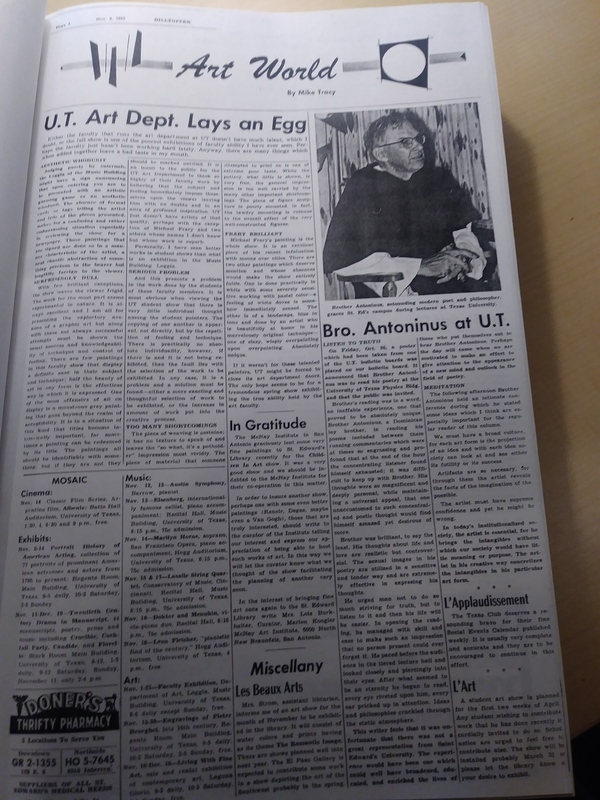Student Life Evolution: Reacting to a New Environment

Hilltopper newspaper clipping covering the Board of Lay Trustees' decision to pass the responsibility of discipline and rule enforcement to the student body.

A Hilltopper clipping showcasing the professors freshman would be working with over the years.
Slowly, the idea of what made a successful college changed-- St. Edwards' faculty changed over the years, transitioning from primarily if not entirely clergy to a mix of laymen and religious leaders. As indicated by a 1962 Hilltopper article titled "Freshmen Must be able to Identify These Men by Name," the faculty was no longer made up of only men of the cloth but spread between lay people with PhDs and education based accomplishments. The clipping from the Hilltopper lists 42 professors, and of those 42, 32 of them were not clergy. The faculty, and therefore the interactions with students, was no longer primarily religious.[1]
Students began to take greater agency over their campus, and these changes they made came in part from the changing religious atmosphere on campus, likely brought on in part by the change of faculty and the shift in campus culture. One article from the Austin Statesman described how students held a vote on the issue of students attending church shorts and decided to favor more modest clothing instead.
Students continued to gain for autonomy-- in 1968, the school passed the power of discipline and enforcing of school rules to the student-run section of the Board of Lay Trustees, claiming they were responsible enough to carry out decisions throughout campus. Students had greater control of the campus than they had ever had before.
St. Edward's existence as a Catholic university greatly affected student life-- as seen in the student bulletin, religious presentation was highly encouraged, if not required. Students were expected to attend weekly Mass, and while non-Catholic students were free not to participate they were still required to be present. A bulletin board reflecting religious opportunities was posted and updated frequently, and students were provided with everything one might need to participate religiously: daily mass and confessions, and well planned yearly activities for the seasons of Advent and Lent.[2]
Even after the reforms of Vatican II, religion stayed a vital part of life on campus. The church was a part of campus culture and stayed present throughout the school experience of every student, be they Catholic or not.
The reforms prompted by Vatican II allowed for more creative expressions of faith and truth. In 1963, for instance, St. Edward's Brother Antoninus presented his poetry and thoughts about life at the University of Texas, providing a unique illustration of the new openness of the Church. The Hilltopper wrote, "Brother was brilliant...His thoughts about life and love are realistic but controversial. The sexual images in his poetry are utilized in a sensative and tender way." While his poems varied widely in subject and tone they retained a clear cohesive theme of new Catholicism.
Bro. Antoninus' poetry shows how widespread the effects of Vatican II were, affecting not only school curriculum and student life, but the very thought processes of others. Bro. Antoninus' change in poetry style and topic and be pulled back to the changes of theology present in Vatican II, shifting the way he viewed Catholicism and the world.

